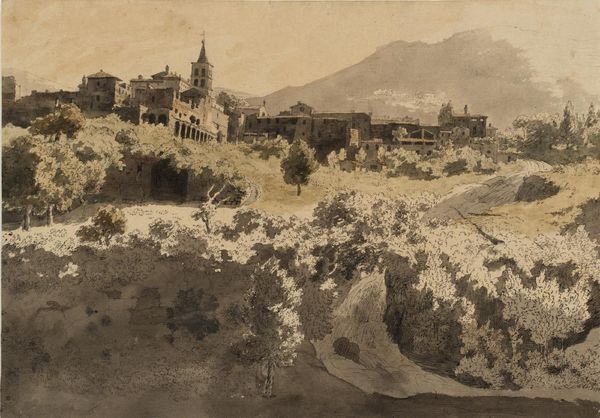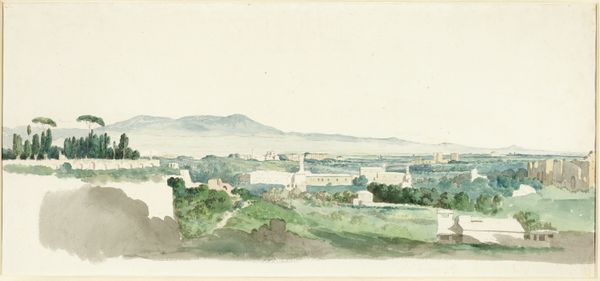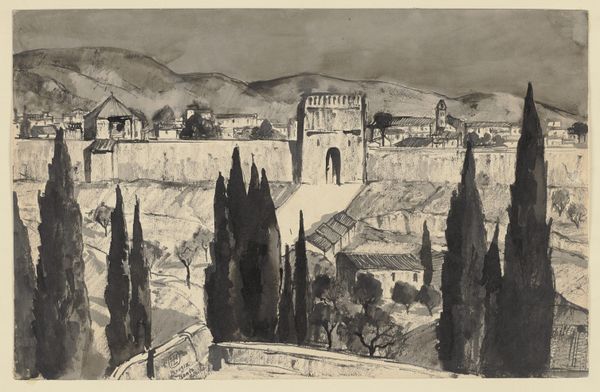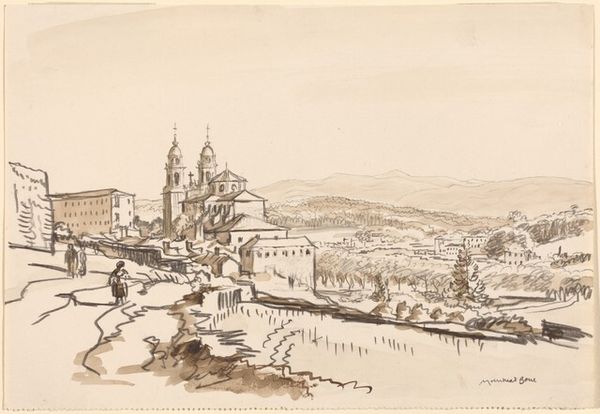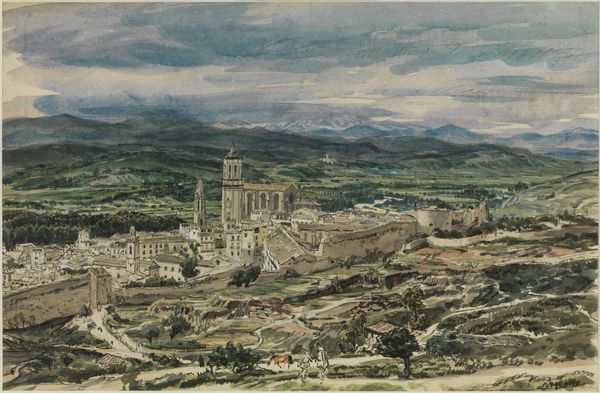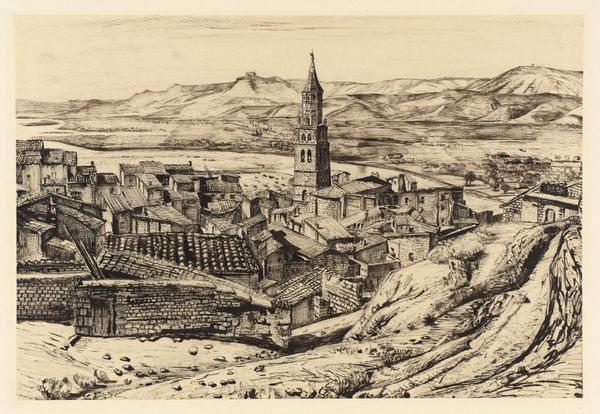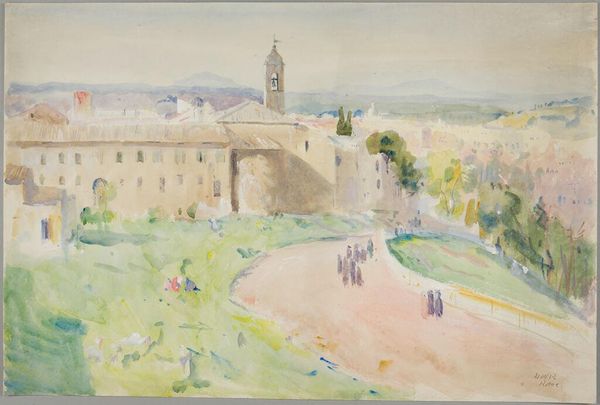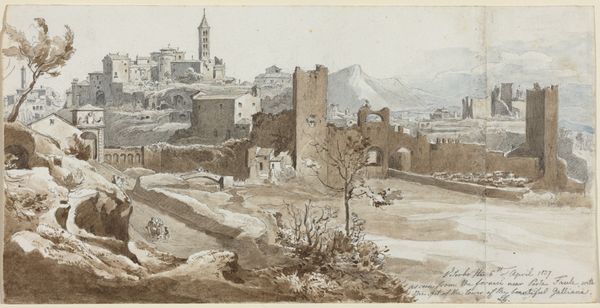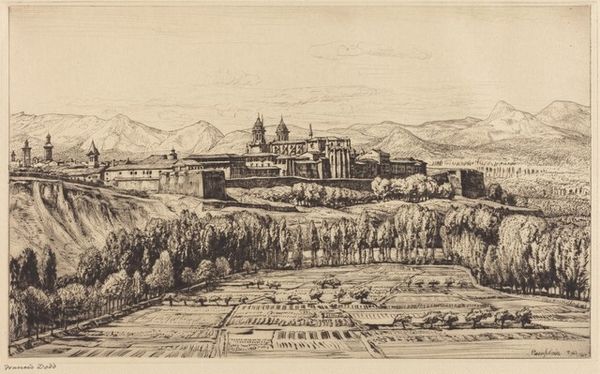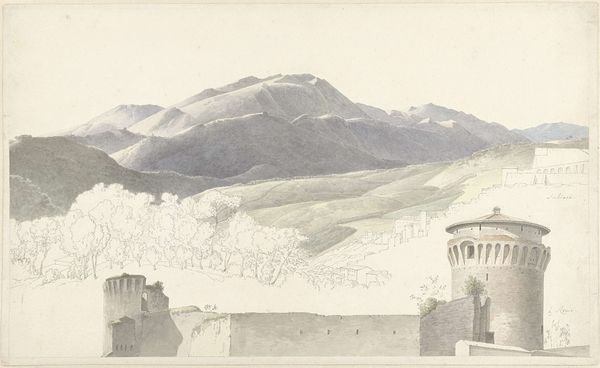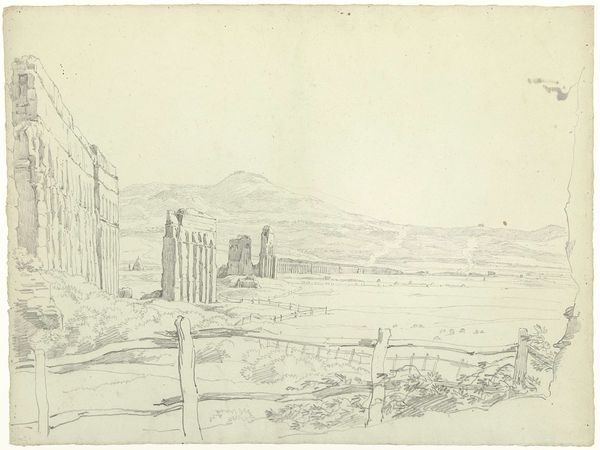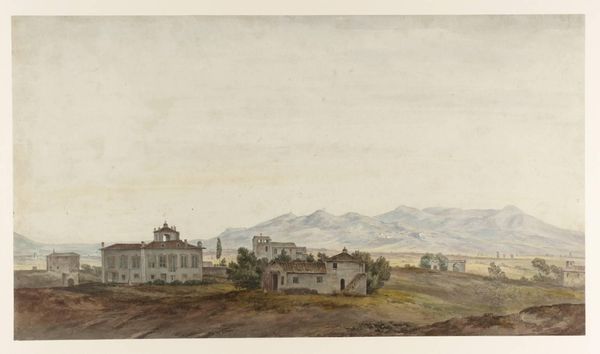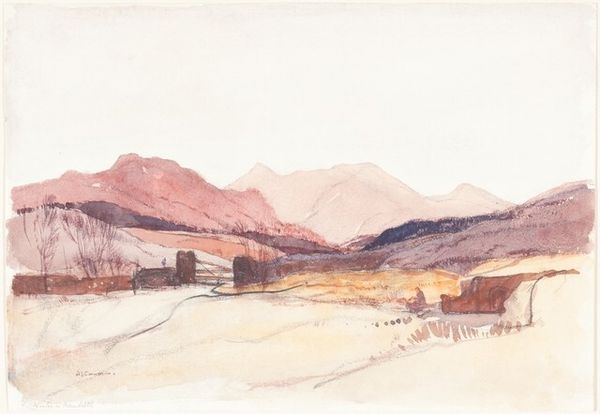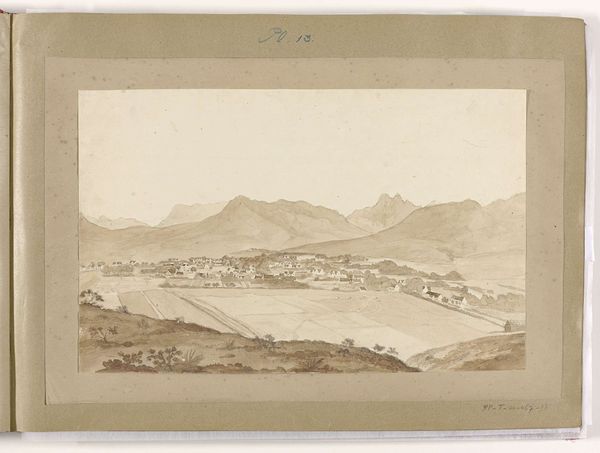
watercolor
#
landscape
#
watercolor
#
romanticism
#
cityscape
#
watercolor
Dimensions: height 280 mm, width 460 mm
Copyright: Rijks Museum: Open Domain
Curator: Wow, it's like looking into a faded dream. Editor: It’s Adrien Dauzats's “View of Malaga from the North,” created in 1836. It’s a watercolor rendering now housed in the Rijksmuseum. Curator: Watercolor! It explains the soft edges and the overall feeling of transience. It's incredibly serene, though also kind of...melancholy? It reminds me of old postcards, fragile and beautiful, hinting at stories of travelers and distant lands. Editor: Absolutely. Think about 1836 in Spain—a period of intense political upheaval following the First Carlist War. Dauzats presents this city from a removed vantage, focusing on the aesthetic beauty, almost ignoring the socio-political context, framing this southern Spanish port as exotic. Curator: So, a sort of… romantic escape? He's perched high up, almost floating above the scene, gazing upon the miniature-like city sprawling towards the sea. The distant mountains add this layer of picturesque grandeur. Editor: Indeed. Note also how Dauzats emphasizes the imposing presence of the cathedral, perhaps as a symbol of enduring power, or simply because it made for a good landmark within the composition. These cityscapes were also products, feeding European fantasies and notions of Orientalism, further romanticizing non-European spaces for consumption. Curator: You know, seeing it that way almost breaks the spell. It’s easy to get lost in the technique and the colors. But knowing it was created in a time of war, that it was essentially ‘consumed’...adds this unsettling layer of meaning. I think the power of landscape art often lies in what is unseen. Editor: Precisely! This landscape is so much more than gentle waves meeting architecture. These images contributed to how Spain and its culture were understood, and often misunderstood. The history matters as much as the harmony. Curator: I'm seeing brushstrokes where I previously just perceived atmosphere...the political weight definitely adds complexity to an image. Editor: Hopefully this dialogue prompts others to consider such artworks more fully as cultural objects and recognize their intricate relations with global events.
Comments
No comments
Be the first to comment and join the conversation on the ultimate creative platform.
